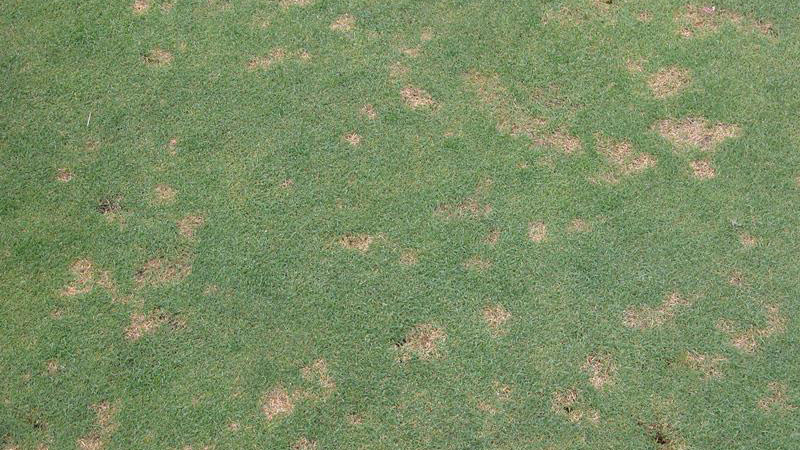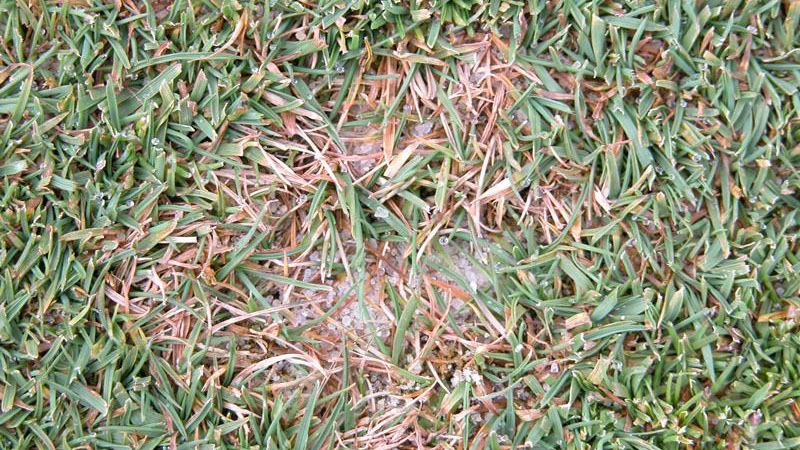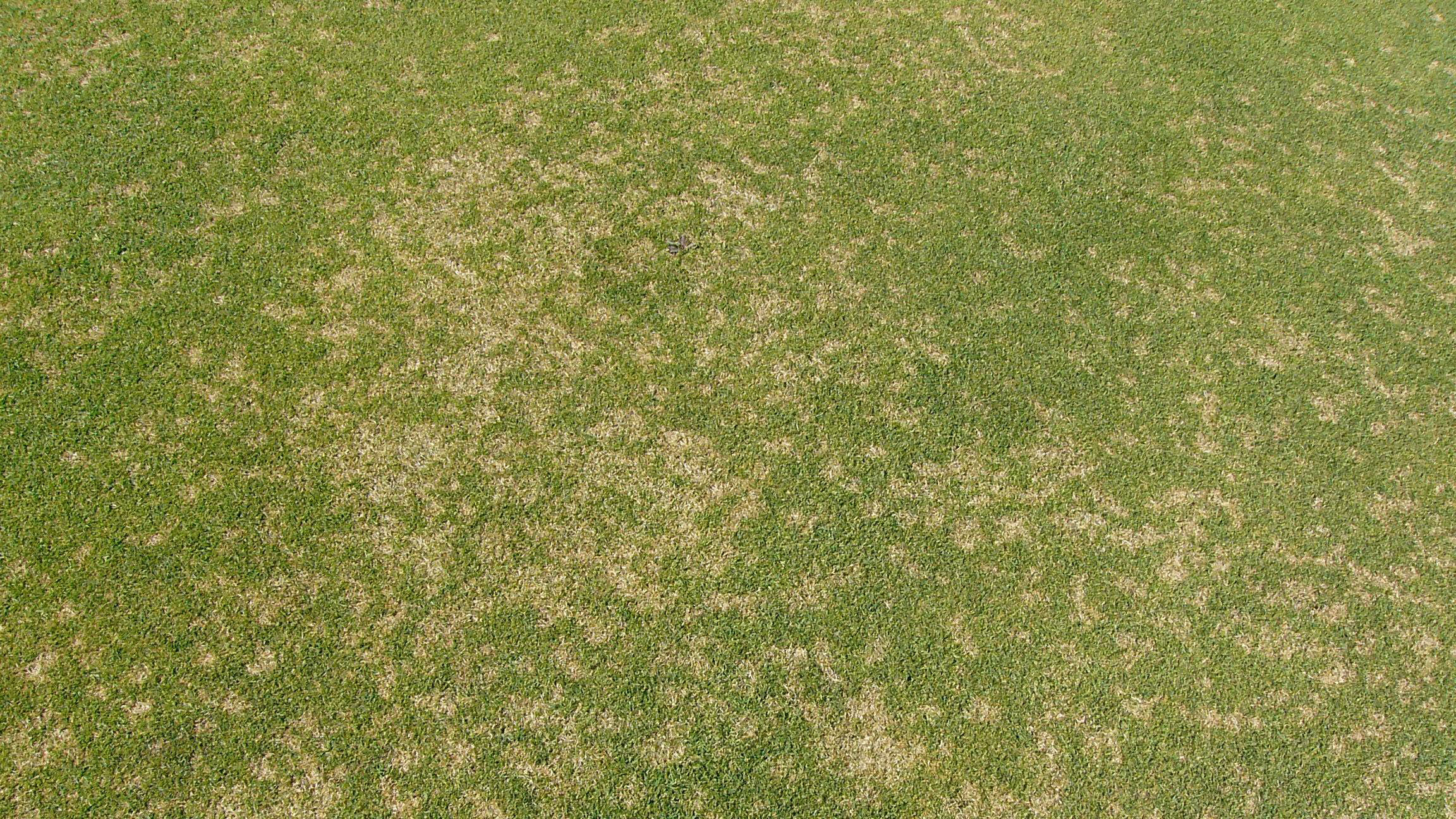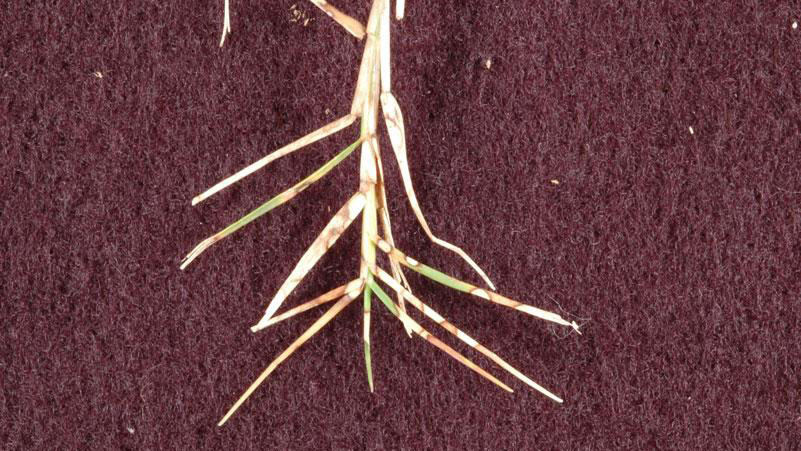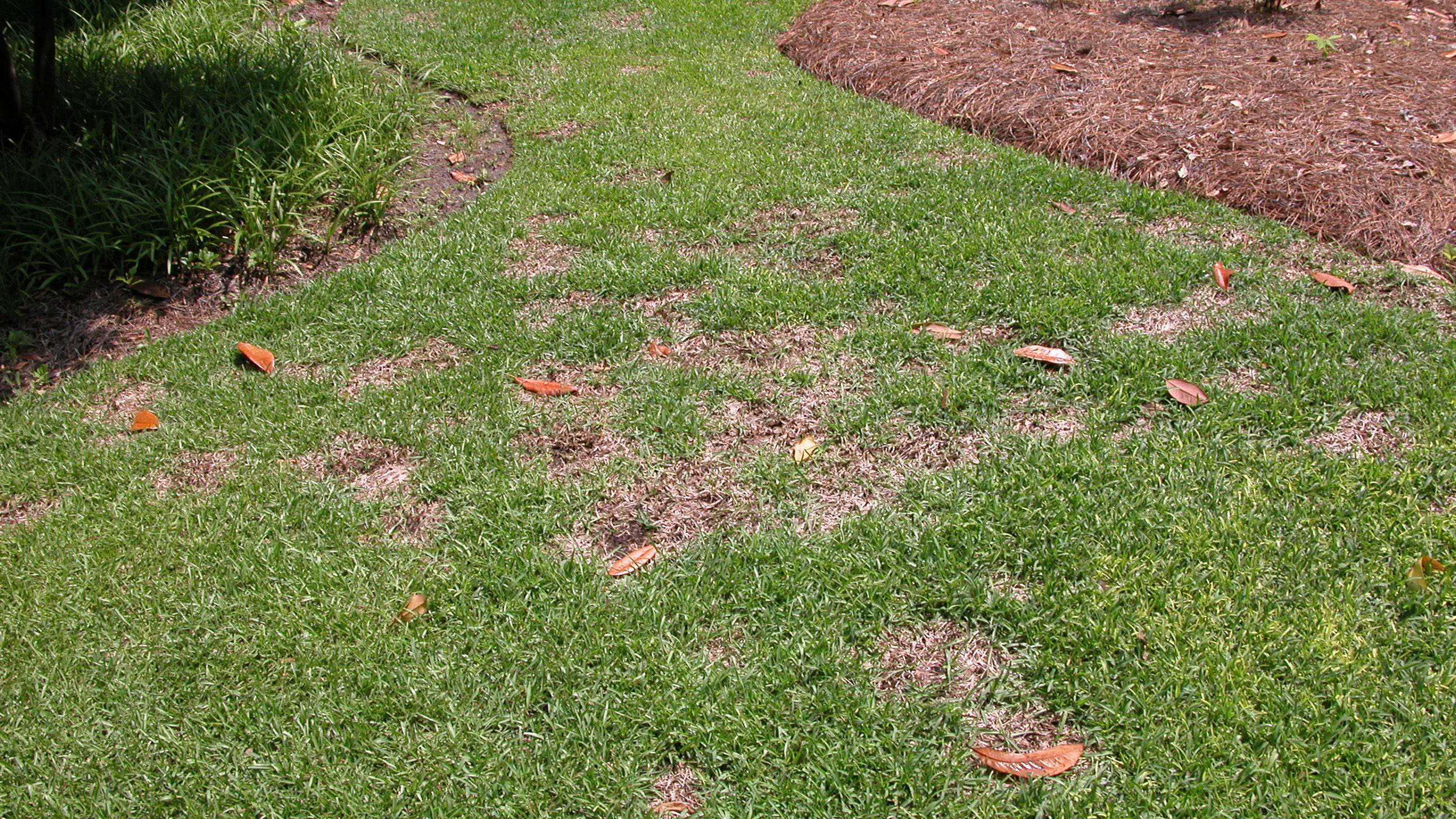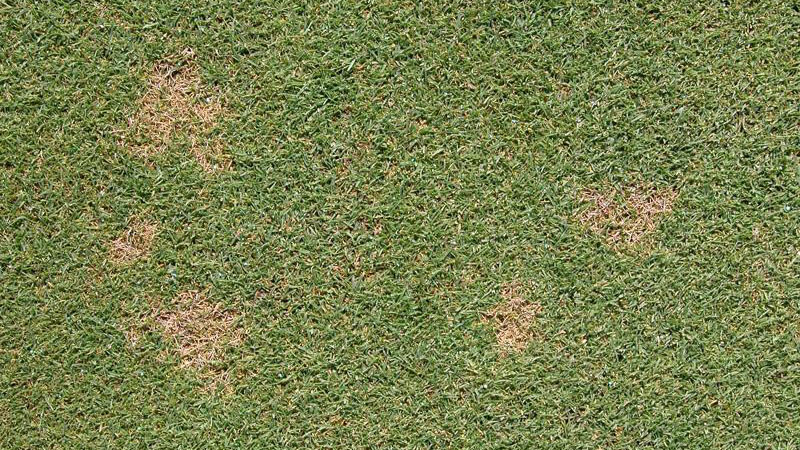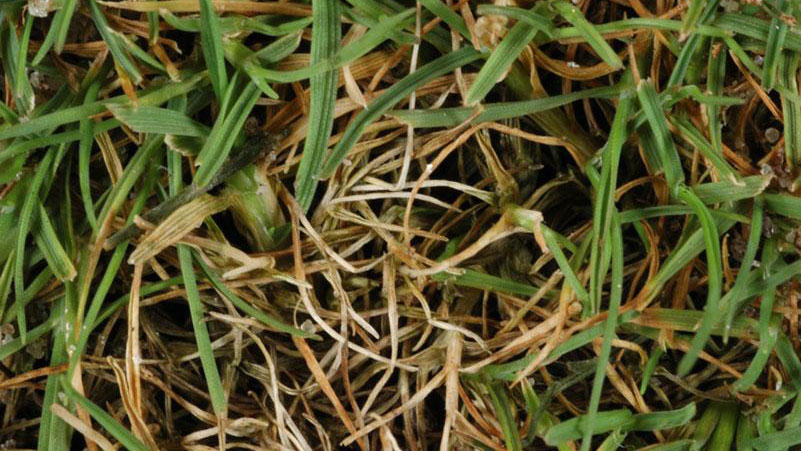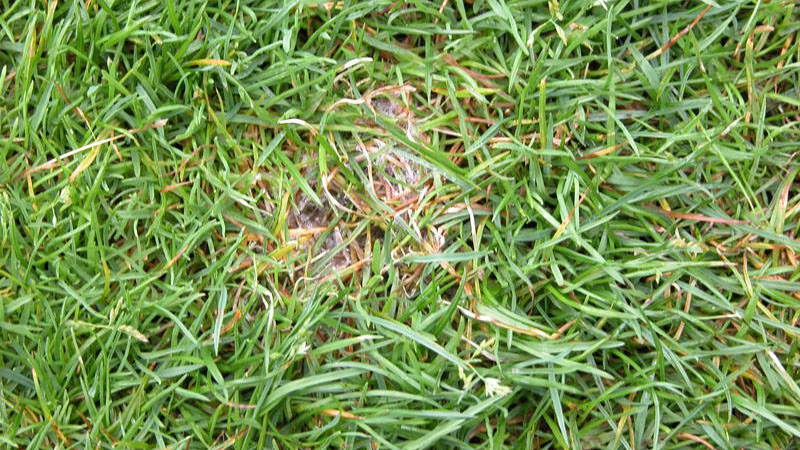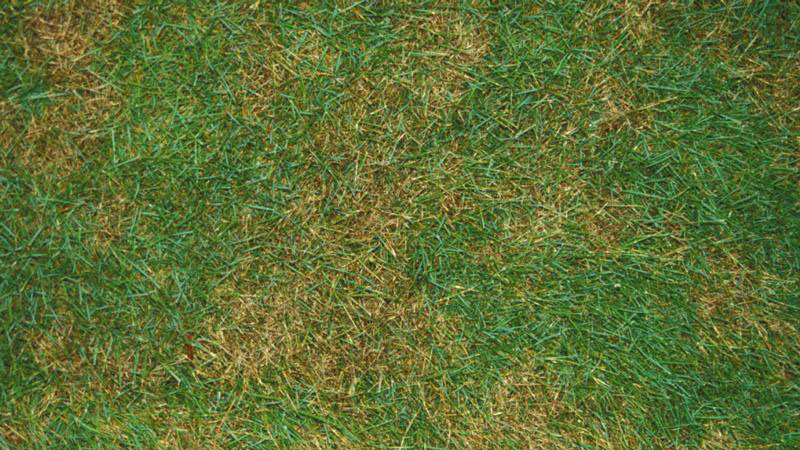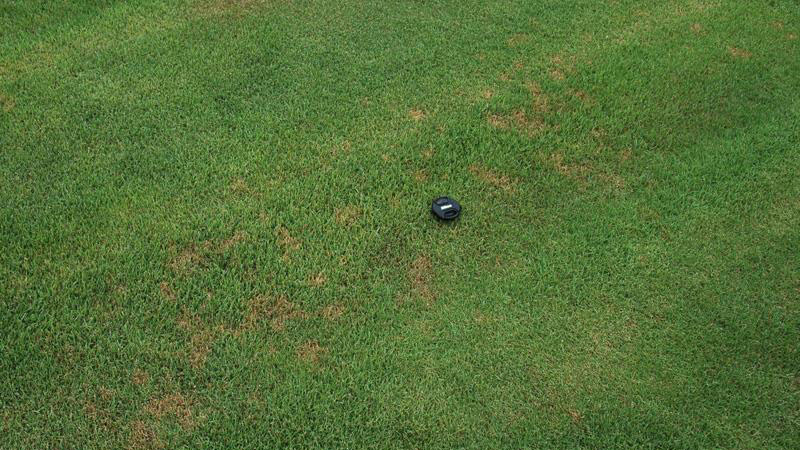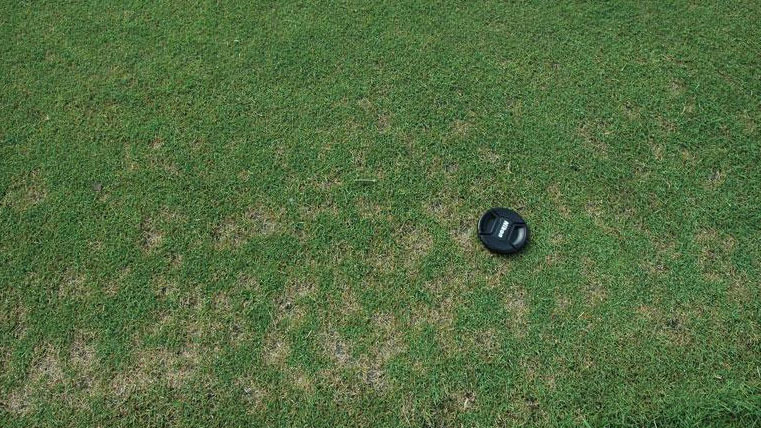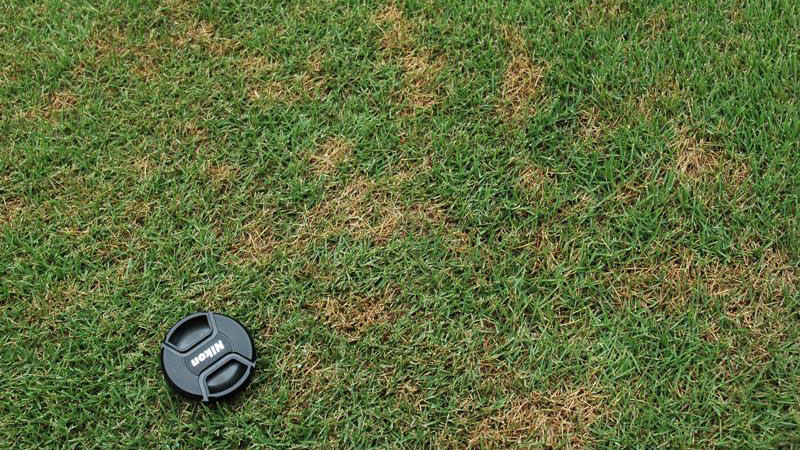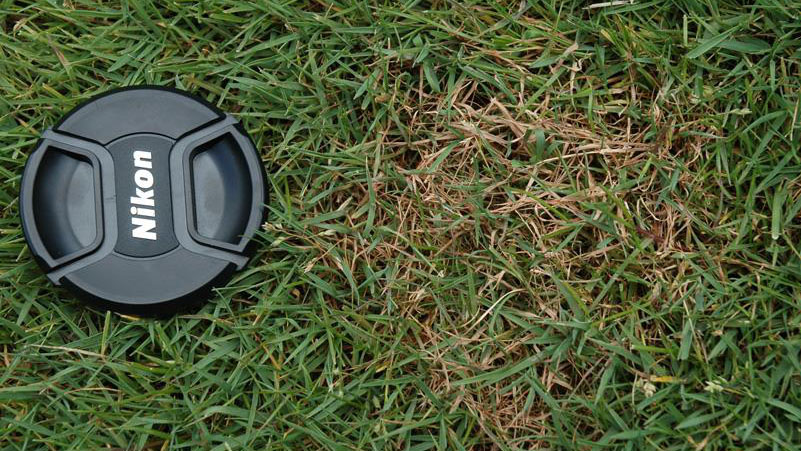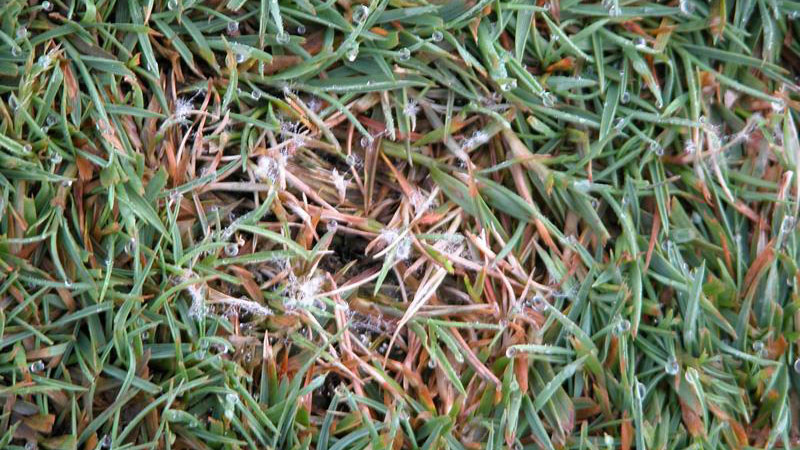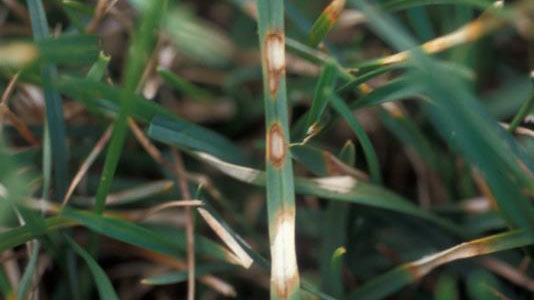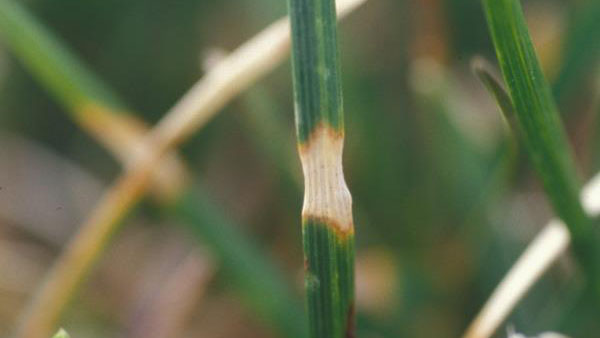Dollar Spot in Turf
en Español / em Português
El inglés es el idioma de control de esta página. En la medida en que haya algún conflicto entre la traducción al inglés y la traducción, el inglés prevalece.
Al hacer clic en el enlace de traducción se activa un servicio de traducción gratuito para convertir la página al español. Al igual que con cualquier traducción por Internet, la conversión no es sensible al contexto y puede que no traduzca el texto en su significado original. NC State Extension no garantiza la exactitud del texto traducido. Por favor, tenga en cuenta que algunas aplicaciones y/o servicios pueden no funcionar como se espera cuando se traducen.
Português
Inglês é o idioma de controle desta página. Na medida que haja algum conflito entre o texto original em Inglês e a tradução, o Inglês prevalece.
Ao clicar no link de tradução, um serviço gratuito de tradução será ativado para converter a página para o Português. Como em qualquer tradução pela internet, a conversão não é sensivel ao contexto e pode não ocorrer a tradução para o significado orginal. O serviço de Extensão da Carolina do Norte (NC State Extension) não garante a exatidão do texto traduzido. Por favor, observe que algumas funções ou serviços podem não funcionar como esperado após a tradução.
English
English is the controlling language of this page. To the extent there is any conflict between the English text and the translation, English controls.
Clicking on the translation link activates a free translation service to convert the page to Spanish. As with any Internet translation, the conversion is not context-sensitive and may not translate the text to its original meaning. NC State Extension does not guarantee the accuracy of the translated text. Please note that some applications and/or services may not function as expected when translated.
Collapse ▲Symptoms
On putting green turf, dollar spot appears as small spots, approximately the size of a dollar coin, that are bleached-white or light tan in color. On turf mowed at heights greater than 0.5”, the spots may expand in size up to 6” or more in diameter. The affected leaves typically remain upright and are characterized by having white or light-tan lesions with light reddish-brown margins. As the lesions expand, the leaves are girdled and the upper part of the leaves dies slowly. Distinct lesions are sometimes not evident on close-cut turfgrasses; instead, the leaves die back from the tip and turn white or light tan in color. The grass in the spots may be killed to the soil surface if the disease continues to develop, and many spots may merge to produce large blighted areas. Short, fuzzy white mycelium is often observed on affected turf in the morning when dew is present.
Development Factors
The dollar spot fungus begins to grow and infect susceptible grasses in the spring when night temperatures exceed 50°F, even though symptoms of the disease may not appear until later in the spring or early summer. In addition, the pathogen requires extended periods of leaf wetness, 10 to 12 continuous hours. Heavy dews that often form during cool nights in the late spring or early summer are most conducive to the disease. Extended periods of wet, overcast weather can also lead to severe dollar spot epidemics on susceptible grasses. Dollar spot remains active throughout the summer in many areas, but disease activity typically slows when high temperatures consistently exceed 90°F.
Turfgrasses that are deficient in nutrients, especially nitrogen, are more prone to dollar spot and also recover from the damage more slowly than well-fertilized turf. The disease is also encouraged by drought stress, low mowing, excessive thatch accumulation, frequent irrigation, and low air movement. Certain cultivars of creeping bentgrass, perennial ryegrass, and Kentucky bluegrass are very susceptible to dollar spot, while others are fairly tolerant.
Cultural Control
Use of resistant cultivars is one of the most effective means of dollar spot management. This is particularly important for creeping bentgrass, perennial ryegrass, and Kentucky bluegrass, as cultivars vary widely in their susceptibility to the disease. Base turfgrass selection on university recommendations or regional cultivar trials operated by the National Turfgrass Evaluation Program or local universities. When planting cool-season grasses, use blends and mixtures of multiple species and varieties whenever possible.
Adequate nitrogen fertilization will help to prevent dollar spot, and will also encourage plants to recover quickly from the disease if it occurs. Select nitrogen sources, rates, and timings based on local University recommendations for your turfgrass species and climate. In general, golf course putting greens established with creeping bentgrass or annual bluegrass should be fertilized with 0.5 lb N/1,000 ft2 per growing month. More or less nitrogen may be required for your location depending on soil type, rainfall amounts, traffic intensity, and other management practices. Deficiencies in other nutrients that limit foliar growth may also exacerbate dollar spot problems. Use soil test results to apply the recommended amounts of phosphorus, potassium, lime, and micronutrients.
Dollar spot is encouraged by drought stress and leaf wetness. Proper irrigation timing is needed to balance these factors. Irrigate based on the moisture status of the soil, not on a calendar schedule. When irrigation is necessary, it should be applied early in the morning, between midnight and 6 AM, to keep leaf wetness periods as short as possible. Mowing, dragging, or whipping the turf in the morning to remove dew can help to prevent dollar spot, but these practices can spread the disease if it is actively developing. Improve air movement and reduce humidity by pruning trees, clearing unwanted vegetation, or relocating desirable plants.
Excessive thatch accumulations greatly encourage dollar spot activity. Remove excess thatch by vertical mowing or power raking. Golf course putting greens should be aerified regularly and topdressed with sand to reduce thatch buildup.
Dollar spot is readily spread in leaf tissue or clippings from infected areas. Avoid spreading the disease by washing equipment before entering an uninfected area and by removing and disposing of clippings taken from infected areas.
Chemical Control
Many fungicides control dollar spot, but preventative applications are most effective. A preventative program should be implemented in the early spring when night temperatures consistently exceed 50°F. When applied on a curative basis, fungicides must be applied at high rates and short application intervals.
Uniform spray coverage is important for maximizing fungicide performance; even small gaps in coverage may allow dollar spot to develop. Nozzle type, nozzle pressure, and dilution rate have the greatest impact on the uniformity of fungicide applications. Nozzles that produce coarse to extremely coarse droplets, such as TurfJet or Raindrop nozzles, dramatically reduce the performance of fungicides for dollar spot control. Air-induction or flat fan nozzles that produce fine to medium droplets are recommended. In order to provide thorough coverage of the turfgrass foliage, fungicides should be applied in 2 gallons of water per 1,000 square feet; lower carrier volumes reduce the performance of fungicides for foliar disease control.
The fungus that causes dollar spot develops resistance to fungicides very quickly. To prevent or delay the onset of fungicide resistance, use integrated management to minimize fungicide use, rotate among fungicide classes after each application, and tank-mix systemic fungicides with a contact fungicide.
* Products marked with an asterisk are not labeled for home lawn use.
| Fungicide and Formulation1 | Amount of Formulation2 | Application Interval (Days)3 | Efficacy Rating | Resistance Risk | FRAC Code4 |
| azoxystrobin + difenoconazole (Briskway)* | 0.5 to 1.2 | 14 to 21 | +++ | Medium | 11/3 |
| azoxystrobin + propiconazole (Headway) ME G |
0.75 to 3 2 ot 4 lbs |
7 to 28 14 to 28 |
+++ | Medium | 11/3 |
| azoxystrobin + tebuconazole (Strobe T)* | 0.75 to 1.5 | 14 to 21 | ++++ | Medium | 11/3 |
|
benzovindiflupyr + difenoconazole (Ascernity)* |
1.0 | 14 to 21 | +++ | High | 7/3 |
| boscalid (Emerald)* | 0.13 to 0.18 | 14 to 28 | ++++ | High | 7 |
|
boscalid + chlorothalonil (Encartis)* |
3 to 4 | 14 to 28 | ++++ | Medium | 7/M5 |
| chlorothalonil (Daconil Ultrex)* |
1 to 1.8 |
7 to 10 |
+++ | Low | M5 |
| chlorothalonil (Daconil Weather Stik)* |
1 to 2 |
7 to 10 7 to 21 14 |
+++ | Low | M5 |
| chlorothalonil (Daconil Zn)* |
1.5 to 3 |
7 to 10 7 to 21 14 |
+++ | Low | M5 |
| chlorothalonil + acibenzolar-S-methyl (Daconil Action)* | 1 to 3.5 4 to 5.4 |
7 to 21 14 |
+++ | Low | M5/P01 |
| chlorothalonil + azoxystrobin (Renown)* | 2.5 to 4.5 | 7 to 14 | +++ | Low | M5/11 |
| chlorothalonil + fluoxastrobin (Fame C)* | 3 to 5.9 | 14 to 21 | +++ | High | M5/11 |
| chlorothalonil + iprodione + thiophanate-methyl + tebuconazole (Enclave)* | 3 to 4 7 to 8 |
14 to 21 28 |
+++ | Low | M5/2/1/3 |
| chlorothalonil + propiconazole (Concert)* | 1.5 to 3 3 to 5.5 5.5 to 8.5 |
7 to 10 14 to 21 14 to 28 |
++++ | Medium | M5/3 |
| chlorothalonil + propiconazole + fludioxonil (Instrata)* | 2.75 to 6 | 21 to 28 | ++++ | Medium | M5/3/12 |
| chlorothalonil + thiophanate-methyl (Spectro)* | 3.72 to 5.76 | 14 to 21 | +++ | Medium | M5/1 |
| fluazinam (Secure)* | 0.5 | 14 | ++++ | Low | 29 |
| fluazinam + acibenzolar-S-methyl (Secure Action)* | 0.5 | 14 to 21 | ++++ | Low | 29/P01 |
| fluazinam + tebuconazole (Traction)* | 1.3 | 14 | ++++ | Low | 29/3 |
|
fluindapyr + flutriafol (Kalida) |
0.25 to 0.4 | 7 to 14 | ++++ | Medium | 7/3 |
| fluopyram + trifloxystrobin (Exteris Stressgard) | 1.5 to 4.135 | 7 to 28 | ++++ | Medium | 7/11 |
| fluoxastrobin (Fame) | 0.18 to 0.36 | 14 to 21 | ++ | High | 11 |
| fluoxastrobin + tebuconazole (Fame T)* | 0.45 to 0.9 | 21 to 28 | ++++ | Medium | 11/3 |
| flutriafol (Rayora)* | 0.7 to 1.4 | 14 to 21 | +++ | Medium | 3 |
| fluxapyroxad (Xzemplar) | 0.16 to 0.26 | 14 to 28 | ++++ | High | 7 |
| iprodione (26GT)* | 2 to 4 | 14 to 28 | +++ | Medium | 2 |
| iprodione + thiophanate-methyl (26/36)* | 2 to 4 | 14 to 21 | +++ | High | 2/1 |
| iprodione + trifloxystrobin (Interface)* | 2 to 5 | refer to label | ++++ | Medium | 2/11 |
| isofetamid (Kabuto) | 0.4 to 0.5 | 14 | +++ | Medium | 7 |
| isofetamid + tebuconazole (Tekken)* | 3 | 14 to 28 | ++++ | Low | 7/3 |
| mancozeb (Fore)* (Dithane)* |
6 to 8 6 to 8 |
7 to 14 10 |
+ | Low | M3 |
| mandestrobin (Pinpoint) | 0.17 to 0.31 | 14 to 21 | +++ | Medium | 11 |
| mefentrifluconazole (Maxtima)* | 0.2 to 0.4 | 14 to 28 | ++++ | Medium | 3 |
| mefentrifluconazole + pyraclostrobin (Navicon)* | 0.7 to 0.85 | 14 to 28 | ++++ | Medium | 3/11 |
| metconazole (Tourney) | 0.18 to 0.37 | 14 to 21 | +++ | Medium | 3 |
| mineral oil (Civitas) + proprietary pigment (Civitas Harmonizer)* | (8 to 32) + (1 to 4) | 7 to 21 | + | Low | -- |
| myclobutanil (Eagle) | 0.5 to 2.4 | 7 to 28 | ++ | Medium | 3 |
| penthiopyrad (Velista) | 0.3 to 0.5 | 14 to 21 | +++ | High | 7 |
| propiconazole (Banner MAXX) | 0.5 to 2 | 7 to 28 | +++ | Medium | 3 |
|
prothioconazole (Densicor)* |
0.196 | 14 to 21 | +++ | Medium | 3 |
|
Pseudomonas chlororaphis strain AFS009 (Zio) |
1.8 to 6 | 7 to 21 | + | Not Known | BM02 |
| pydiflumetofen (Posterity)* | 0.08 to 0.32 | 14 to 28 | ++++ | Medium | 7 |
|
pydiflumetofen + azoxystrobin + propiconazole (Posterity Forte)* |
0.42 to 0.84 | 21 to 28 | ++++ | Medium | 7/11/3 |
|
pydiflumetofen + azoxystrobin + propiconazole (Posterity XT)* |
1.5 to 3 | 14 to 28 | ++++ | Medium | 7/11/3 |
| pyraclostrobin (Insignia) WG SC |
0.9 0.7 |
14 14 |
++ | High | 11 |
| pyraclostrobin + boscalid (Honor)* | 0.83 to 1.1 | 14 to 21 | ++++ | High | 11/7 |
| pyraclostrobin + fluxapyroxad (Lexicon Intrinsic) | 0.34 to 0.47 | 14 to 28 | ++++ | High | 11/7 |
| pyraclostrobin + triticonazole (Pillar G) | 3 lbs | 14 to 28 | ++ | Medium | 11/3 |
| tebuconazole (Torque)* (Mirage)* |
0.6 to 1.1 1 to 2 |
refer to label 14 to 28 |
+++ | Medium | 3 |
| thiophanate-methyl (3336) (3336 Plus) |
2 to 4 2 to 4 |
14 14 to 28 |
++ | High | 1 |
| triadimefon (Bayleton) | 0.25 to 1 | 14 to 30 | +++ | Medium | 3 |
| trifloxystrobin + triadimefon (Armada) (Tartan)* |
0.6 to 1.2 1 to 2 |
14 to 28 14 to 28 |
+++ | High | 11/3 |
| triticonazole (Trinity) (Triton) (Triton FLO) |
1 to 2 0.15 to 0.3 0.28 to 1.1 |
14 to 28 14 to 28 14 to 28 |
+++ | Medium | 3 |
| triticonazole + chlorothalonil (Reserve)* | 3.2 to 4.5 | 14 to 28 | ++++ | Medium | 3/M5 |
|
1 Other trade names with the same active ingredients are labeled for use on turfgrasses and can be used according to label directions. |
|||||
| Efficacy Rating ++++ = excellent control when conditions are highly favorable for disease development +++ = good control when disease pressure is high, excellent control when disease pressure is moderate ++ = good control when disease pressure is moderate, excellent control when disease pressure is low + = good control when disease pressure is low ? = not rated due to insufficient data |
|||||
| Resistance Risk Low = Rotate to different chemical class after 3-4 applications; tank mixing not necessary Medium = Rotate to different chemical class after 1-2 applications; tank-mixing with low or medium risk product recommended High = Rotate to different chemical class after EVERY application; tank-mix with low or medium risk product for EVERY application ? = not rated due to insufficient data |
|||||
Species Data
- HOST SPECIES
- MONTHS WITH SYMPTOMS
- February to November
- STAND SYMPTOMS
- FOLIAR SYMPTOMS LOCATION / SHAPE
- round leaf spots, leaf lesions
- FOLIAR SYMPTOMS COLOR
- ROOT / CROWN SYMPTOMS
- none
- FUNGAL SIGNS
- mycelium or none





